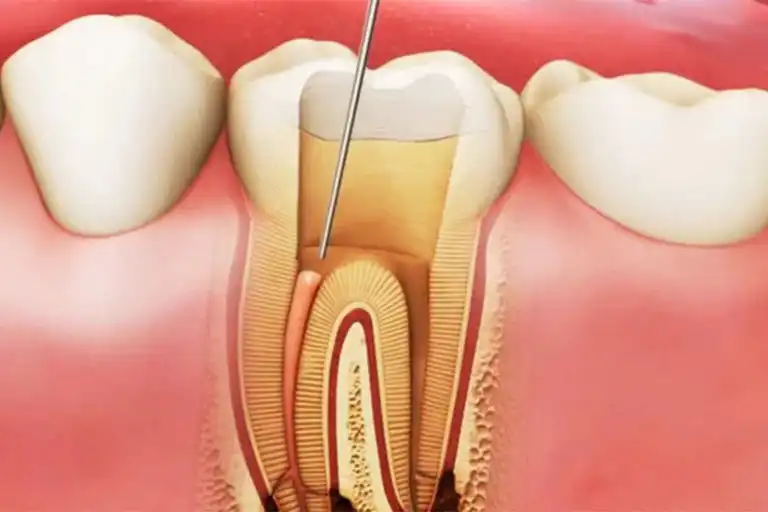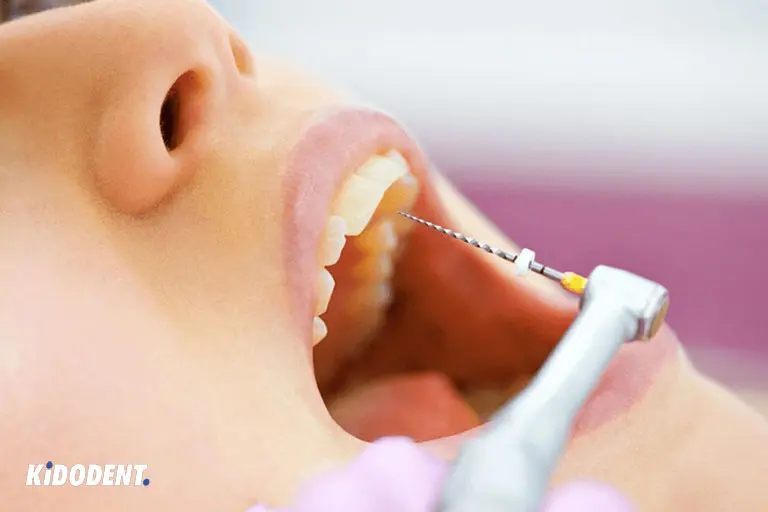Your dentist or endodontist might have prescribed a root canal on front tooth? Front teeth are responsible for your smile and this may cause you some concern. You don’t need to be nervous when hearing the word root canal. In the United States, roughly 15 million root canals are done yearly, according to the American Association of Endodontics. Root canals are painless and simple which are considered as one of the most common dental procedures practiced by dentists. This article will help answer your most common questions about front tooth root canal.
What is a root canal on front tooth treatment?
A root canal on front tooth is a procedure to eliminate pain and discomfort that is caused by infection to the center of a tooth (pulp). It involves removing infected or damaged pulp from within a tooth followed by cleaning it out, filling it with special material, sealing, and putting a filling or a crown on the tooth.

No matter front or back teeth, each tooth has a pulp inside—a living tissue that consists of nerves, blood vessels, and connective tissues. When the enamel and the outer layer of a tooth gets damaged, say for example, by injuries like chipped or cracked tooth or due to tooth decay. This can open way for bacteria to reach the pulp and cause infection. It affects the nerves and leads to symptoms like pain, swelling and sensitivity to hot or cold.
Root canal treatment provides relief and is a safe and effective way to save teeth.
What is the procedure like for a root canal on front tooth?
Once taking X-rays and confirming that your need a root canal, your dentist or endodontist will perform the procedure as follow:
- Apply local anesthetic to the area of treatment to numb your tooth. Your treatment is going to be pain-free with anesthesia, so no need to have any anxiety or fear.
- Drill a small opening from around your tooth to get through the pulp.
- Remove all the infected or diseased pulp tissue from the root of the tooth.
- Disinfect and dry out the entire area of canal and the tooth’s root.
- After cleaning the space, the dentist or endodontist fills the area with a biocompatible filler material (usually a rubber-like material called gutta-percha) to ensure complete sealing of the canal and root of the tooth.
- Repair the tooth using composite resin dental filling to restore the shape and give you a beautiful smile
- If necessary, your dentist may recommend a dental crown following your root canal. This will protect your front tooth from further damage and provide optimal strength, function, and natural appearance.
The good thing about a root canal on front tooth
Root canal treatment is your best option which aims to treat your infected tooth, relieve your discomfort, and more importantly saving natural teeth. When delayed, the only choice would be an extraction. Here are reasons why this treatment can be beneficial when it comes to the anterior teeth:
Preserving natural smile appearance
Having a missing front tooth can alter the esthetic of your smile. You will have to go through costlier dental procedures like implants or bridges to fill in the gaps. Root canal treatment, but, helps save your natural tooth where it can be necessary.
Not only does root canal therapy alleviates and addresses the pain of an infected tooth, it prevents tooth extraction and therefore no need for a replacement. In addition, with proper oral hygiene and good maintenance, this is a great way to keep your original teeth.
Root canal on front tooth can be easier
Depending on treatment, the length of root canals can vary, taking anywhere between 30 minutes to one hour or even several appointments. Molars have multiple roots and are much more complex than anterior teeth which are single-rooted and have less pulp. Therefore, a dentist may need more time to perform a root canal on a molar or premolar than a front tooth.
Recovery is faster
Generally, the recovery after a root canal only takes less than a week. You may only need just a few days for the tooth to heal. For front teeth, the recovery can be slightly shorter due to less complexity in front teeth anatomy and thus ease of treatment.
Does a front tooth need a crown after a root canal?
Not necessarily. In most cases, front teeth can be restored with permanent composite filling following a root canal treatment. However, you may need a crown if a tooth is badly damaged or with a large fracture.
Will I have any complications after my root canal?
You may have some mild pain after a root canal, but this is temporary and will go away after a few days. The pain shouldn’t be severe or make you uncomfortable. It is important to return to your dentist if you have moderate to severe pain or if your pain gets worse with pressure or drinking hot or cold. Also, see your dentist when noticing persistent swelling, uneven bite, or bad odor in your mouth.
Root canals have a high success rate in most cases. It is uncommon if an infection after a root canal occurs. However, this can be likely when factors like improper cleaning/disinfecting and poor sealing or restoration will increase risk of reinfection and thus the need for retreatment.
